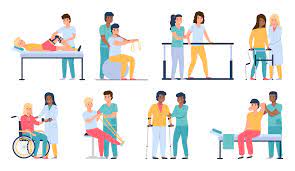Describe two external stressors that are unique to adolescents.
Discuss what risk-taking behaviors may result from the external stressors and what support or coping mechanism can be introduced.
Health Assessment During The Adolescent And Prenatal Periods-Sample Solution
External Stressors among Adolescents
Stress occurs when environmental demands exceed the adaptive capacity of an individual. While adolescents’ bodies and brains can cope with mild stress, chronic stress leads to psychological and biological changes that predispose people to mental health disorders. Ideally, during the transition phase between childhood and adulthood, adolescents face immense psychosocial and physiological changes that change how they cope with stress. Notably, a shift in hypothalamic-pituitary-adrenal (HPA) axis reactivity results in high stress-induced hormones predisposing adolescents to stress (DePascuale et al., 2021).(External-stressors unique to adolescents EssayExample)
External Stressors
Peer pressure is a common external pressure that is unique among adolescents. In this case, adolescents are directly or indirectly influenced by belonging to specific peer groups with common interests, social status, and experiences (Andrew et al., 2021). First, stress results when peer groups pressure an individual to engage in uncomfortable behavior such as shoplifting, alcoholism, reckless driving, and undesirable sexual behavior. Stress also arises when an individual cannot cope with the expectations of their peer group and perceives themselves as inferior, losing self-esteem. Second, school and social factors cause stress among adolescents. For example, low grades, examinations, sleep deprivation from immense pending assignments, and poor time management are likely to trigger stress. Additionally, social isolation and discrimination based on sexual identity also cause stress among adolescents.(External-stressors unique to adolescents EssayExample)
Risk Taking Behaviors and Coping Mechanisms
Subsequently, adolescents have different stress-coping behaviors. While some teenagers cope with stress, some fall into depression from low self-esteem and undesirable behaviors. Risky behaviors among adolescents are impulsive and result in detrimental outcomes such as death from suicide, homicide, and accidents. Other individuals result to drug abuse, alcoholism, and unsafe sexual activities. However, stress coping mechanisms aid in risk-taking behaviors among adolescents. Notably, problem-focused coping mechanisms aim to address the root cause of the problem leading to stress (Bhurtun et al., 2021). For instance, students’ stress caused by poor time management can be remedied by devising strategies to manage one’s time. Secondly, emotionally focused coping aids to address the emotions that are related to the problem. Offering guidance and counseling, social inclusion, and engaging in hobbies are vital for coping with stress. (External-stressors unique to adolescents EssayExample)

References
Andrews, J. L., Ahmed, S. P., & Blakemore, S. J. (2021). Navigating the social environment in adolescence: The role of social brain development. Biological Psychiatry, 89(2), 109-118.
Bhurtun, H. D., Turunen, H., Estola, M., & Saaranen, T. (2021). Changes in stress levels and coping strategies among Finnish nursing students. Nurse education in practice, 50, 102958.
DePasquale, C. E., Herzberg, M. P., & Gunnar, M. R. (2021). The pubertal stress recalibration hypothesis: potential neural and behavioral consequences. Child Development Perspectives, 15(4), 249-256.
